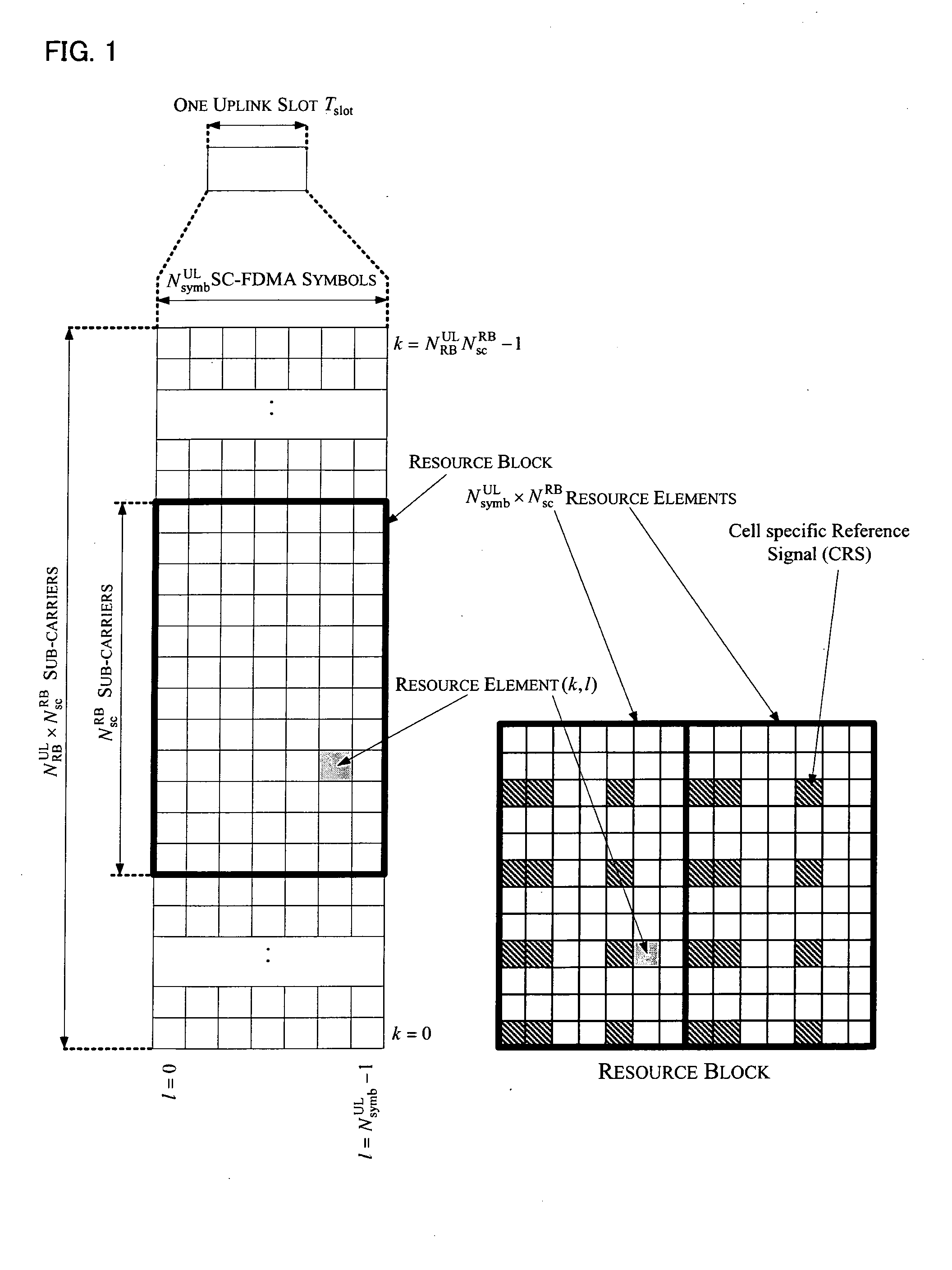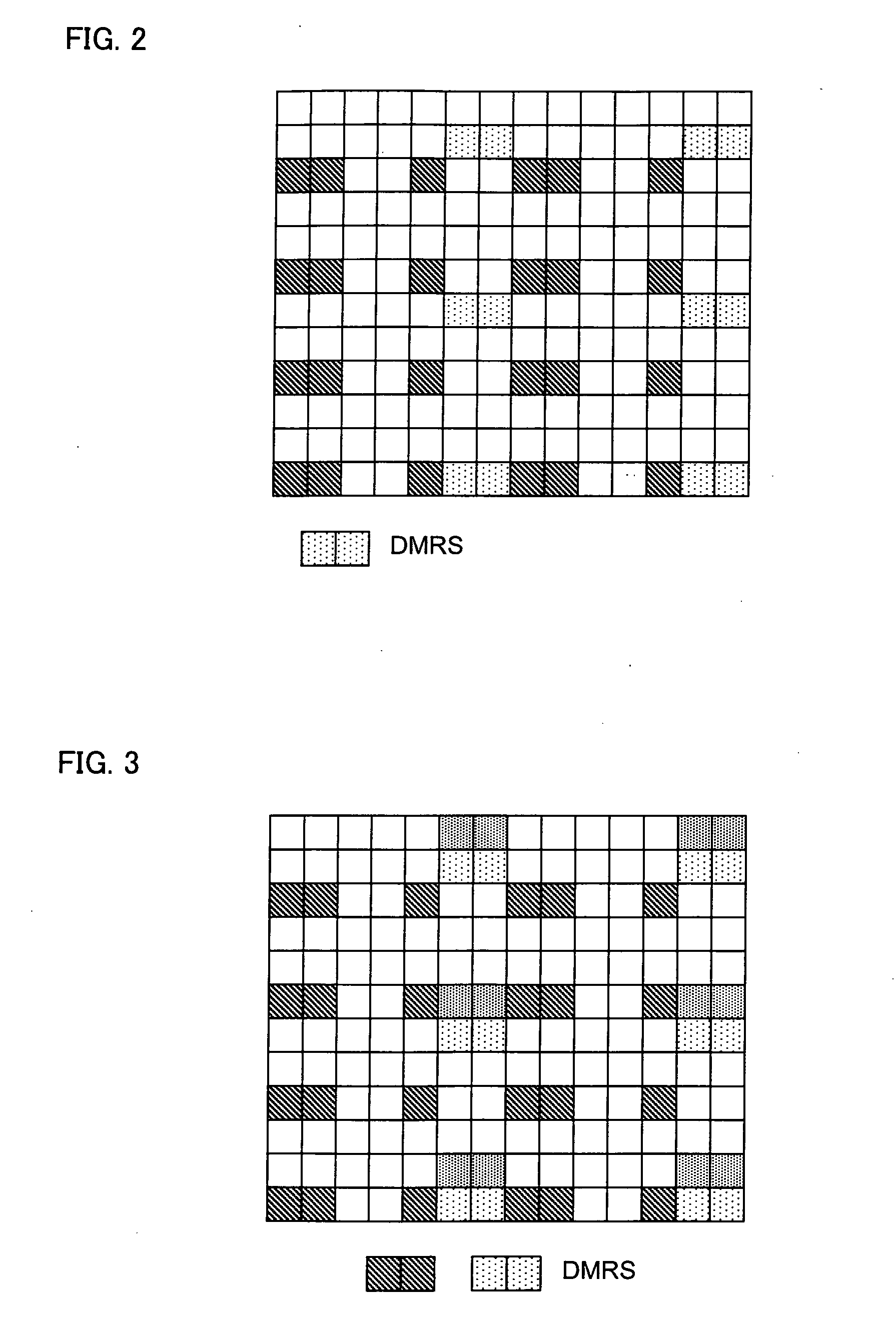Method of notifying resource allocation for demodulation reference signals
a reference signal and resource allocation technology, applied in the field of cellular mobile communication system, can solve the problems of inconvenient multi-user mimo scheduling and power allocation, difficult to maintain a fixed offset between the power of dmrs and the power of downlink data, and a lot of inconvenience for multi-user power allocation, so as to suppress or cancel interference
- Summary
- Abstract
- Description
- Claims
- Application Information
AI Technical Summary
Benefits of technology
Problems solved by technology
Method used
Image
Examples
Embodiment Construction
[0040]Some particular embodiments of the present invention will be described in the following such that the implementation steps of the present invention can be clearly detailed. While these embodiments are directed to a mobile communication system utilizing a dedicated DMRS on downlink (particularly an LTE-Advanced cellular mobile communication system), it is to be noted that the present invention is not limited to these applications and can be applied to other related communication systems.
[0041]In the following, the preferred embodiments of the present invention will be detailed with reference to the figures. In the present description, details and functions unnecessary for the present invention will be omitted, so as not to obscure the understanding the present invention.
[0042]In an LTE system, a Cell-specific Reference Signal (CRS) is required for a user equipment (UE) to perform channel estimation and demodulation. The slot structure of the CRS is shown in FIG. 1 (see 3GPP 36....
PUM
 Login to View More
Login to View More Abstract
Description
Claims
Application Information
 Login to View More
Login to View More - R&D
- Intellectual Property
- Life Sciences
- Materials
- Tech Scout
- Unparalleled Data Quality
- Higher Quality Content
- 60% Fewer Hallucinations
Browse by: Latest US Patents, China's latest patents, Technical Efficacy Thesaurus, Application Domain, Technology Topic, Popular Technical Reports.
© 2025 PatSnap. All rights reserved.Legal|Privacy policy|Modern Slavery Act Transparency Statement|Sitemap|About US| Contact US: help@patsnap.com



